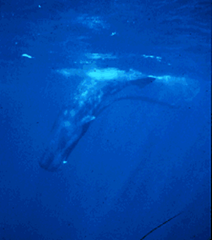 By Marc Kaufman
By Marc Kaufman
May 9, 2010; 11:38 AM ET As oil from the Deepwater Horizon gushes out and spreads, one noble creature that few would imagine is in grave danger is a subspecies of the huge and officially endangered sperm whale. A population estimated to be around 500 is known to live in the deep waters that drop off from the end of the Mississippi Delta – in other words, just where the deepwater Gulf oil business is newly drilling for oil. Nobody knows at this point whether any of the whales have been harmed, but the chances that all would escape seem low. The whales–which grow up to 60 feet long– have long been attracted to the cold and nutrient rich waters in the Mississippi outflow, and there’s every reason to believe some were in the Deepwater Horizon region when the geyser began. In fact, what makes scientists believe the Mississippi Delta sperm whale is a separate species is that it is seen year-round in the area, suggesting that it has fully adapted to life there. The use of chemical dispersants to break up the oil is adding to the toxic load in the water, and to the concern for marine mammals, fish and birds of all kind. The sperm whales feed on zooplankton that some think could be quickly and severely contaminated, as well as bottom dwelling giant squid. Michael Jasny, senior policy analyst of the Natural Resources Defense Council is particularly concerned about the Gulf sperm whale, based on the known mortality of dolphins in the aftermath of the Exxon Valdez spill. Will the whales flee the toxic oil and dispersants, or will that be impossible for many of them. Since the deep waters off the Mississippi Delta are a nursery for the whales, the danger is clear. In an NRDC blog, Jasny wrote “And what of the sperm whale mothers and calves off the Mississippi Delta? They’re already suffering the loss of a substantial part of their habitat due to the enormous size of the spill, and, like virtually everything else that lives in the area, they’ll go on consuming contaminated prey long after the oil is dispersed. And this is on top of the booming of the industry’s exploratory airguns, which may seriously be impacting their ability to feed.” Ironically, the National Oceanic and Atmospheric Administration began a major study of the Gulf sperm whale population in March, before the spill. They wanted to know if the food chain that supports the whale was being harmed by the onset of deep offshore drilling, which began about 2000.
Dangers for Mississippi Delta sperm whale
By Marc Kaufman